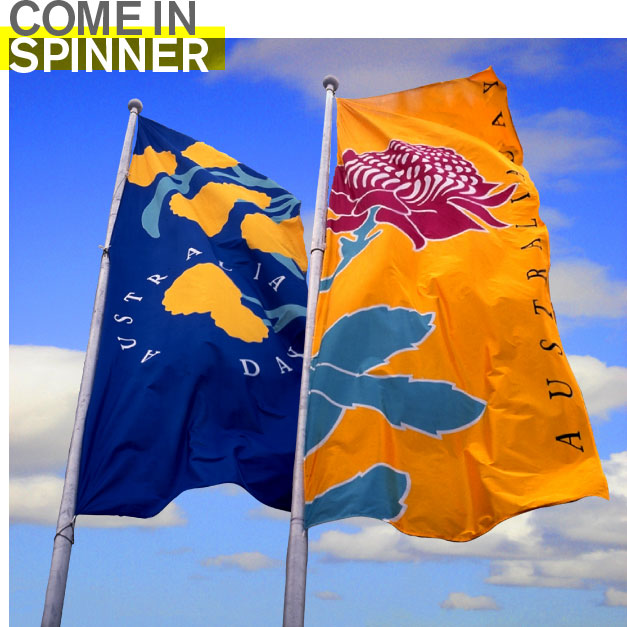
 Two example of the thousands of silk banners showcased nationally
Two example of the thousands of silk banners showcased nationally
The Clients
Australian Federal Government, State and Territory Governments.
Prior to the bicentenary, the 26th of January had never really existed in the general public's mindset
as "Australia Day". This was hardly surprising - there were no celebrations and it wasn't a public
holiday... a far cry from the hugely celebrated and patriotic day it is today.
The Challenge
In short, the brief was to deliver a brand strategy for Australia Day that would be given an
immediate green light by Federal, State and Territory Governments. The project was already way
behind schedule and, needless to say regarding any approval politically, the epitome of the
proverbial hot potato.
The whole project screamed conservative simplicity. A single direction approach was also decided
upon, thereby forcing an all-or-nothing commitment from the clients... flowers: simple, conservative,
positive and inoffensive - a winning combination.
The direction came about via Australia's national flower, the wattle. With each State and Territory
having its own flower, these too could be displayed alongside the wattle... unifying the visual
language and appeasing all stakeholders simultaneously. Moreover, flowers are inoffensive to
everyone (except those with sinus problems) and have positive and uplifting emotional connotations.

Brand identity and stakeholder presentation kit
The Outcome
Unanimous approval was given and (by political standards) in record time. We produced a multitude
of collateral that flooded the market. However, the thousands of three-meter banners that adorned
the public areas of all major cities (such as Sydney's Martin Place) were, visually, the icing on the
cake. Intended to run for only one year – the designs ran for eight!
In the end, we were pushing for Dame Edna banners incorporating gladioli: A response to this also
came back in record time.
Download case study pdf
© 2010
